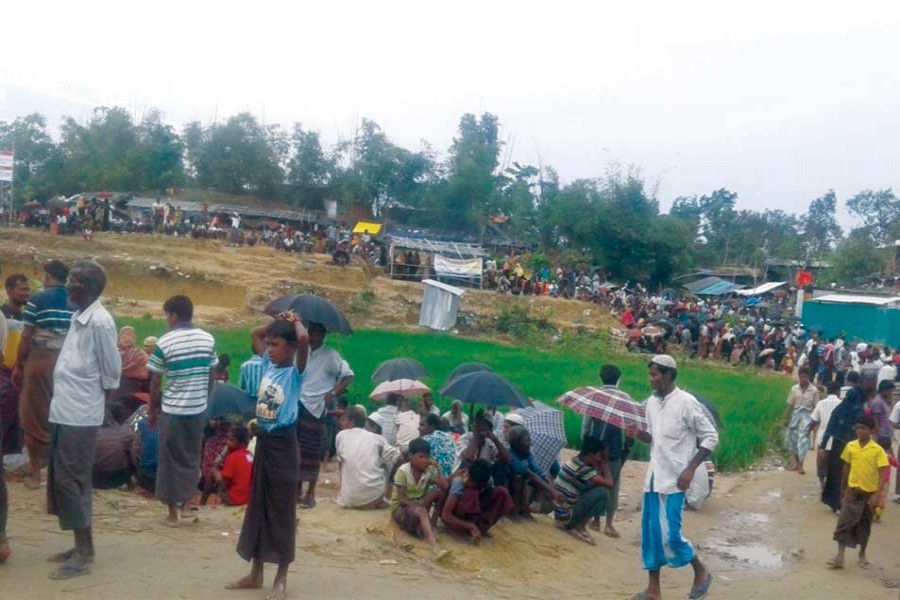About 69 per cent of forcibly - displaced Myanmar nationals (FDMNs) are currently poor compared to the 26 per cent five years ago, according to a recent study.
The study, conducted by Bangladesh Institute of Development Studies (BIDS), revealed that this percentage is higher among newer FDMNs (75 per cent) compared to older FDMNs (59 per cent).
The study titled "The Forcibly Displaced Myanmar Nationals in Bangladesh: Evidence from Household Survey" was released on March 4, 2020.
A little over 50 per cent of FDMN households are the Multidimensional Poverty Index (MPI) poor and the MPI index values of FDMNs are significantly higher than the host community households (22.1 per cent vs. 8.7 per cent).
The percentage of MPI poor is higher among newer waves of refugees than older displaced population, but the difference between the two groups is not gaping, it said. The displaced households of Rohingya are surviving but not thriving said the study.
The study recommended that more could be done on the policy space to enhance their long-term capability and economic mobility.
To fulfill the study objectives, the study adopts a mixed method approach. The quantitative method includes household surveys of the Rohingya in the camps and of the host community based on a structured questionnaire.
The specific objectives are to assess the consumption and nutrition, poverty and vulnerability, and income and employment of the Rohingya.
The total number of households that were surveyed was 1308 new FDMNs, 781 old FDMNs, and 504 host community.
All types of household members across all populations eat nearly three meals a day on average, the study said. However there is a slight preference toward younger members eating more meals than adults, the study mentioned.
Household may be food secure in terms of having three meals per day but are worse-off in terms of access to varieties of food groups because of low household dietary diversity (HDD) and women dietary diversity (MDD-W), the study said.
Host community households, and specifically women, consume more diversified diets than FDMN households and women, the BIDS study disclosed.
Food purchase was the main reason for obtaining a loan, followed by the need to pay for the health expenses, it further said.
Borrowing for the food purchase is more prevalent among FDMN households compared to the host community households (59 per cent opposed to the 39 per cent), and it is considerably higher among the newer waves (62 per cent as opposed to 53 per cent), the study added.


